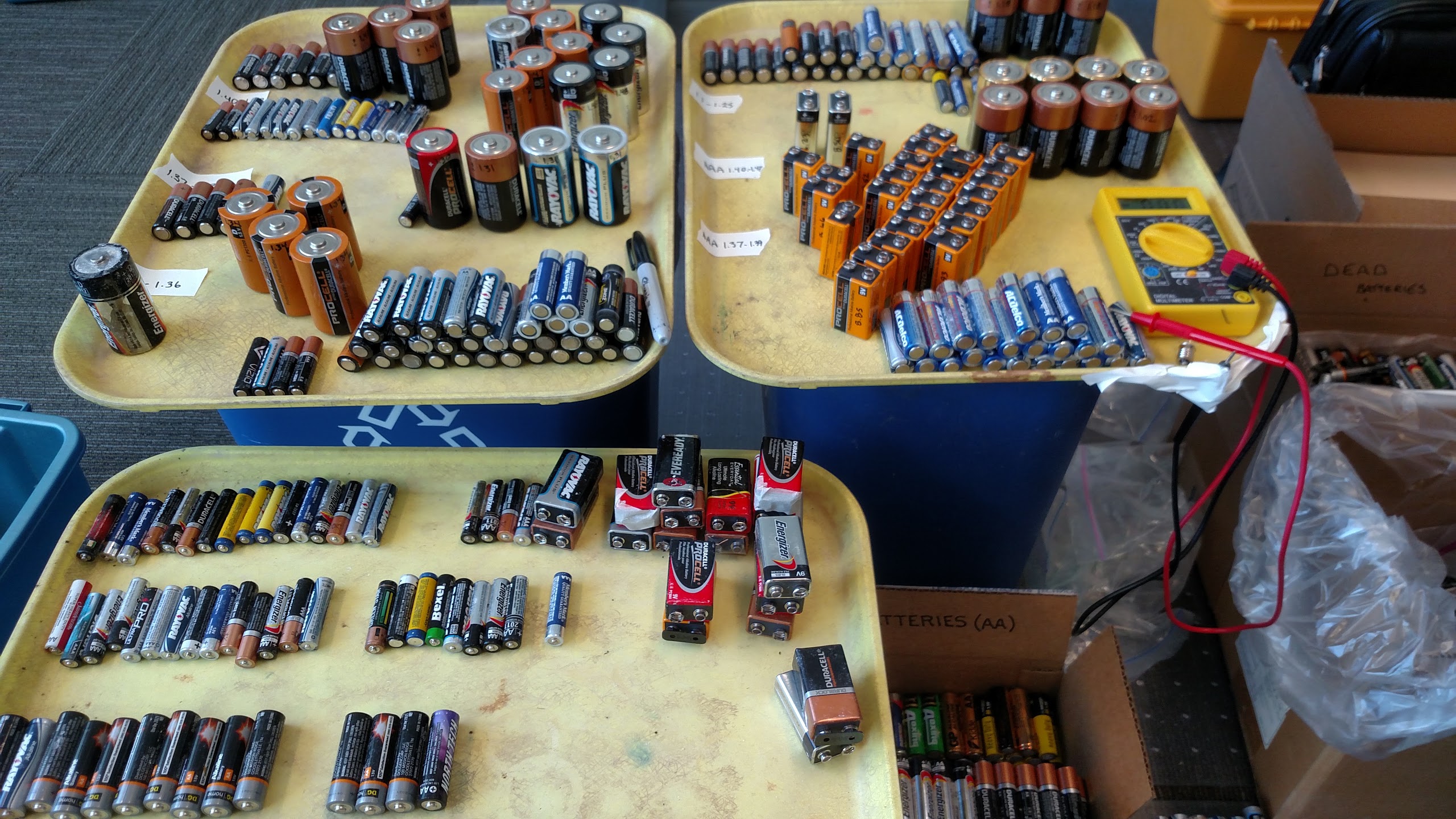
Universal and Non-Hazardous Waste
Universal and Non-Hazardous Waste Classification
Some wastes are classified as non-hazardous but require special handling when disposed of.
The most common items and who collects them are listed below:
- Antifreeze (Facilities collects)
- Ballasts (Facilties collects and drops off at GMS storage 1079)
- Batteries (Chemical Hygiene Officer collects) x4019
- Bulbs (fluorescent) (Facilities collects)
- Electronics (Information Technology collects)
- Oil, and oil filters (Facilities collects)
- Paint (Latex) (Facilities collects)
- Scrap Metal (Facilities collects)
Used Batteries [Chemical Hygiene Plan 5.2.7.1]
Typical Types of Batteries
— Primary Cells (Non-rechargeable) Common Uses — (A, AA, AAA, C, D, 9V, etc.)
Alkaline - Cassettes players, radios, appliances
Carbon-zinc - Flashlights, toys, etc.
Lithium - Cameras, calculators, watches, computers, etc.
Mercury - Hearing aids, pacemakers, cameras, calculators, watches, etc.
Silver - Hearing aids, watches, cameras, calculators
Zinc - Hearing aids, pagers
— Secondary Cells (Rechargeable) Common Uses — Nickel-cadmium Cameras, rechargeable appliances such as portable power tools, hand held vacuums, etc. Small sealed lead-acid Camcorders, computers, portable radios and tape players, cellular phones, lawn mower starters, etc.
Used batteries containing hazardous materials (e.g. mercury, cadmium, lead, and silver) are classified as universal waste rather than hazardous waste.
This allows St Norbert College to recycle the batteries, while continuing to ensure that the batteries are handled in an environmentally sound manner. Lead-acid batteries are also recycled.
Packaging for disposal instructions should be followed to guard against possible short circuiting. The rechargeable Battery Recycling Corporation recommends you do at least one of the following to prepare batteries for recycling. Terminal Protection: Cover the terminals of each battery with non-conductive tape. Place batteries in a separate plastic bag so the terminals will not come in contact with other batteries or metal during storage and transport.
Used oil, oil filters [Chemical Hygiene Plan 5.2.7.2]
Label containers holding used oil as “USED OIL”. Used oil can be recycled by local vendors. Documents stating the vendor’s name, date, and amount of material (e.g. one 20 gallon drum) to be recycled should be forwarded to the Chemical Hygiene Officer to maintain.
Spent Fluorescent Bulbs [Chemical Hygiene Plan 5.2.7.3]
These bulbs require special handling to prevent breakage, during storage and transfer to a certified recycler. Mercury is a toxin that does not dissipate in the environment. It is a bio-accumulative toxin that builds up in the human body, adversely impacting health. Fluorescent lamps contain small amounts of mercury. In 1976, the Federal Resource Conservation and Recovery Act regulated that mercury must be managed as a hazardous waste. This classification is dependent on amount of mercury collected and the timetable for its disposal. If the weight of the waste lamps is less than 220 pounds, or approximately 300 four-foot T-12 lamps, then the lamps can be considered "Conditionally Exempt Hazardous Waste." If this exemption is not applicable, the waste can then be managed as "Universal Waste." This classification streamlines the disposal process, saving time and money, while ensuring that the mercury is handled properly.
Scrap Metal [Chemical Hygiene Plan 5.2.7.4]
Different metals can be recycled by local vendors. Documents stating the vendor’s name, date, and approximate weight should be forwarded to the Chemical Hygiene Officer to maintain.
Computer and Monitor Waste [Chemical Hygiene Plan 5.2.7.5]
The Director of Information Technology is responsible for contracting with a certified recycler any computer wastes that are generated.













